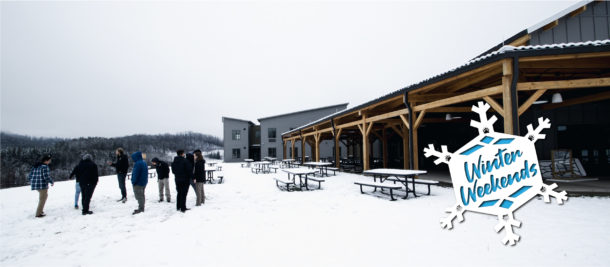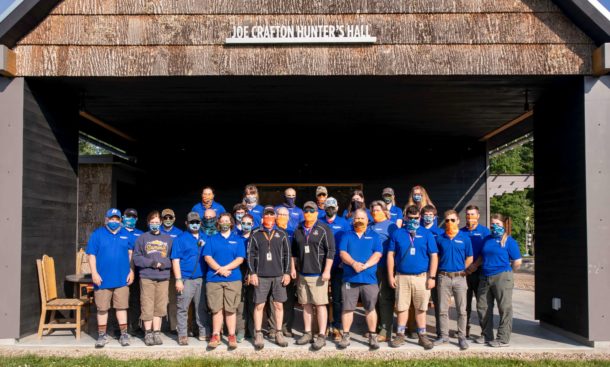Venturers from New Orleans, Louisiana, recently went through the intense BSA climbing instructor training. The course certifies both Scouts/Venturers and leaders as official BSA climbing instructors. Climbing is a fun, yet somewhat risky, activity with much to learn in order to keep everyone safe, and these Venturers completed the training in just under 18 long hours of both vigorous studying of the Climb On Safely rules and hands-on training on their tower.
Some of the same Venturers also went through the COPE (Challenging Outdoor Personal Experience) instructor training as well. Through that course, they learned how to direct other Scouts using the EDGE method through the low and high elements of Camp Salmen Scout Reservation (SSR) in Parkinson, Mississippi.
Hitting the Books
Before suiting up and hitting the wall, first you have to learn the technical stuff, and in the world of climbing, it really does matter. The Venturers spent two nights from 6:30 to 10:30 studying the BSA technical rules for both the climbing/COPE activities and the facilities. Finally, they finished the week by taking the BSA climbing instructors’ test.
Climbing as It Was Meant to Be
After many hours of learning the rules to the game, it was time for the real thing. The nearly certified instructors arrived early at SSR, ready to learn. Within moments everyone was in harnesses and helmets, and Dewey S., a Venturer from Crew 48, was going through the safety checklist for participants.
First, the Venturers practiced their knots and rigging abilities by completely setting up the three climbs and the low and high rappels.
[pullquote]”I hope to soon get many of those climbing instructors cross-trained as COPE instructors, and with that enrich the programs we offer Southeast Louisiana.” John Mark Maust, Southeast Louisiana COPE Committee chairman, climbing lead instructor[/pullquote]
After taking a quick break, they were ready to cover one of the most important skills: on-rope rescues. In an emergency, such as if a climber’s rope gets jammed or a climber becomes stuck, an instructor has to rappel down and use their knots to help the climber rescue him or herself. This is done with a Prusik knot on the rope. The climber then steps into the bight (or loop) on the Prusik, releasing pressure off of their rappel gear. They can then untangle and continue their adventure!
After learning the rescues, the Venturers finished what they needed to qualify as the sun set and, after a full day of successful training, completed their nearly 24-hour climbing training course!Tell us about your elevated adventure in the comment sections below!




